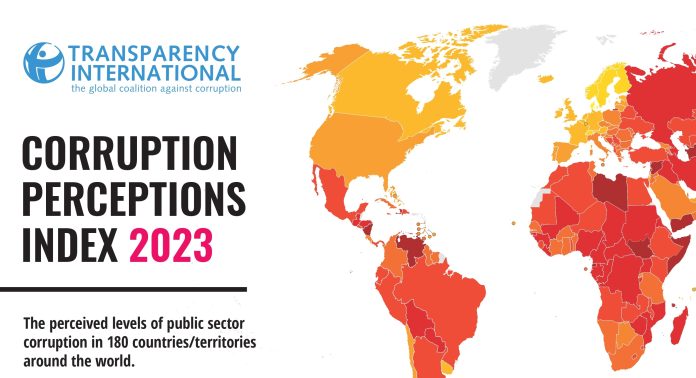Latvia’s performance on the latest Corruption Perception Index (CPI), released by Transparency International, has improved over the past two years, but the progress has been slow and Latvia still lags behind other countries of the European Union (EU) and the Organization for Economic Co-operation and Development (OECD), LETA was told at Delna, the Latvian chapter of Transparency International.
In 2023, Latvia’s CPI improved by one point compared to 2021 and 2022, rising to 60 out of 100 points, which ranked Latvia (along with Spain) 14th among the 27 EU member states. Technically, Latvia has climbed one position compared to the previous year. The EU average CPI score is above 64 points, though.
According to Delna, as Latvia’s performance on the CPI is improved too slowly, chances of achieving the National Development Plan’s target of 64 points in 2024 and 67 points in 2027 are being lost. So far, Latvia has needed almost a decade to achieve a four-point increase on the CPI.
Corruption researchers put down Latvia’s slow progress to delayed implementation of bold anti-corruption measures in areas such as political integrity, prevention of embezzlement, and promotion of business integrity. Accordingly, these are areas that Delna says need to be prioritized for improvement by those working in the public and private sectors, as well as civil society organizations.
In Delna’s assessment, the stagnation of Latvia’s CPI score is an indication that the country’s anti-corruption efforts have so far been unsuccessful and that more vigorous action is needed to eradicate corruption and introduce effective enforcement measures.
The EU average score in the CPI is unchanged at 64 points, while the OECD average is also unchanged at 66 points.
The CPI is published annually by Transparency International and is the world’s most widely used indicator of corruption in the public sector.
Source: BNS
(Reproduction of BNS information in mass media and other websites without written consent of BNS is prohibited.)

